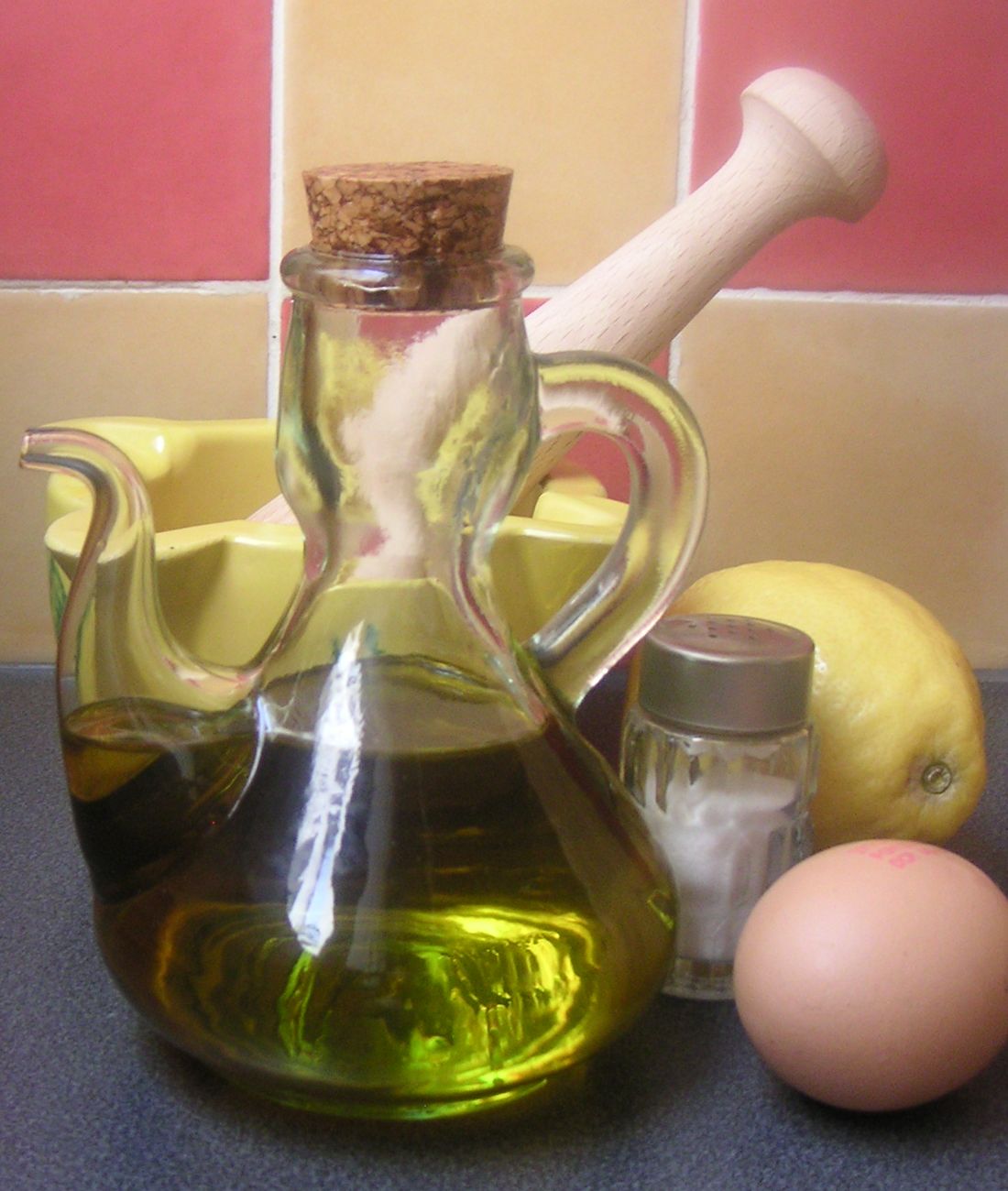|
Winterization (of Oil)
Winterization of oil is a process that uses a solvent and cold temperatures to separate lipids and other desired oil compounds from waxes. Winterization is a type of fractionation (also known as fractionate crystallization), the general process of separating the triglycerides found in fats and oils, using the difference in their melting points, solubility, and volatility. Winterization is an oil refinement technique commonly used in biotechnology. The process involves dissolving the extract in ethanol, then placing the mixture in a freezer to chill. The cold allows for the separation of compounds by differences in their melting and precipitation points. In the cooling process, the fats and waxes with higher melting points will precipitate out and can then be removed by filtration, centrifugation, decantation, or other separation processes. A pure, liquid oil extract is left behind, ready to be further processed for consumer use. Bioindustry applications Food products containing ... [...More Info...] [...Related Items...] OR: [Wikipedia] [Google] [Baidu] |
Lipid
Lipids are a broad group of organic compounds which include fats, waxes, sterols, fat-soluble vitamins (such as vitamins A, D, E and K), monoglycerides, diglycerides, phospholipids, and others. The functions of lipids include storing energy, signaling, and acting as structural components of cell membranes. Lipids have applications in the cosmetic and food industries, and in nanotechnology. Lipids are broadly defined as hydrophobic or amphiphilic small molecules; the amphiphilic nature of some lipids allows them to form structures such as vesicles, multilamellar/ unilamellar liposomes, or membranes in an aqueous environment. Biological lipids originate entirely or in part from two distinct types of biochemical subunits or "building-blocks": ketoacyl and isoprene groups. Using this approach, lipids may be divided into eight categories: fatty acyls, glycerolipids, glycerophospholipids, sphingolipids, saccharolipids, and polyketides (derived from condensatio ... [...More Info...] [...Related Items...] OR: [Wikipedia] [Google] [Baidu] |
Sunflower Oil
Sunflower oil is the non-volatile oil pressed from the seeds of the sunflower (''Helianthus annuus''). Sunflower oil is commonly used in food as a frying oil, and in cosmetic formulations as an emollient. Sunflower oil is primarily composed of linoleic acid, a polyunsaturated fat, and oleic acid, a monounsaturated fat. Through selective breeding and manufacturing processes, oils of differing proportions of the fatty acids are produced. The expressed oil has a neutral taste profile. The oil contains a large amount of vitamin E. Composition Sunflower oil is mainly a triglyceride. The British Pharmacopoeia lists the following profile: *Palmitic acid (saturated): 5% *Stearic acid (saturated): 6% *Oleic acid (monounsaturated omega-9): 30% * Linoleic acid (polyunsaturated omega-6): 59% Four types of sunflower oils with differing concentrations of fatty acids are produced through plant breeding and industrial processing: high-linoleic (conventional), high-oleic, mid- ... [...More Info...] [...Related Items...] OR: [Wikipedia] [Google] [Baidu] |
Supercritical Carbon Dioxide
Supercritical carbon dioxide (s) is a fluid state of carbon dioxide where it is held at or above its critical temperature and critical pressure. Carbon dioxide usually behaves as a gas in air at standard temperature and pressure (STP), or as a solid called dry ice when cooled and/or pressurised sufficiently. If the temperature and pressure are both increased from STP to be at or above the critical point for carbon dioxide, it can adopt properties midway between a gas and a liquid. More specifically, it behaves as a supercritical fluid above its critical temperature () and critical pressure (), expanding to fill its container like a gas but with a density like that of a liquid. Supercritical is becoming an important commercial and industrial solvent due to its role in chemical extraction, in addition to its relatively low toxicity and environmental impact. The relatively low temperature of the process and the stability of also allows compounds to be extracted with little ... [...More Info...] [...Related Items...] OR: [Wikipedia] [Google] [Baidu] |
Cannabis Oil
Hash oil or cannabis oil is an oleoresin obtained by the extraction of cannabis or hashish. It is a cannabis concentrate containing many of its resins and terpenes – in particular, tetrahydrocannabinol (THC), cannabidiol (CBD), and other cannabinoids. Hash oil is usually consumed by smoking, vaporizing or eating. Preparations of hash oil may be solid or semi-liquid colloids depending on both production method and temperature and are usually identified by their appearance or characteristics. Color most commonly ranges from transparent golden or light brown, to tan or black. There are various extraction methods, most involving a solvent, such as butane or ethanol. Hash oil is an extracted cannabis product that may use any part of the plant, with minimal or no residual solvent. It is generally thought to be indistinct from traditional hashish, at-least according to the 1961 UN Single Convention on Narcotic Drugs that defines these products as "the separated resin, whether crude ... [...More Info...] [...Related Items...] OR: [Wikipedia] [Google] [Baidu] |
Cannabis Industry
The cannabis industry is composed of legal Cannabis cultivation, cultivators and producers, consumers, independent industrial standards bodies, ancillary products and services, regulators and researchers concerning cannabis and its industrial derivative, hemp. The cannabis industry has been inhibited by regulatory restrictions for most of recent history, but the legal market has emerged rapidly as more governments legalize medical and adult use. Uruguay became the first country to legalize recreational marijuana through legislation in December, 2013. Canada became the first country to legalize private sales of recreational marijuana with Cannabis Act (Canada), Bill C-45 in 2018. Market value The world economic market has been broken down as follows, showing that the cannabis industry can be considered a multibillion-dollar component of a larger pharmaceutical industry. The exact value of cannabis sales worldwide remains unknown as the vast majority of the market remains illicit. Wit ... [...More Info...] [...Related Items...] OR: [Wikipedia] [Google] [Baidu] |
Crystallization
Crystallization is a process that leads to solids with highly organized Atom, atoms or Molecule, molecules, i.e. a crystal. The ordered nature of a crystalline solid can be contrasted with amorphous solids in which atoms or molecules lack regular organization. Crystallization can occur by various routes including Precipitation (chemistry), precipitation from solution, freezing of a liquid, or Deposition (phase transition), deposition from a gas. Attributes of the resulting crystal can depend largely on factors such as temperature, air pressure, cooling rate, or Solution (chemistry), solute concentration. Crystallization occurs in two major steps. The first is nucleation, the appearance of a crystalline phase from either a Supercooling, supercooled liquid or a supersaturation, supersaturated solvent. The second step is known as crystal growth, which is the increase in the size of particles and leads to a crystal state. An important feature of this step is that loose particles fo ... [...More Info...] [...Related Items...] OR: [Wikipedia] [Google] [Baidu] |
Biofuel
Biofuel is a fuel that is produced over a short time span from Biomass (energy), biomass, rather than by the very slow natural processes involved in the formation of fossil fuels such as oil. Biofuel can be produced from plants or from agricultural, domestic or industrial Biodegradable waste, bio waste. Biofuels are mostly used for transportation, but can also be used for heating and electricity. Biofuels (and bioenergy, bio energy in general) are regarded as a renewable energy source. The use of biofuel has been subject to criticism regarding the "food vs fuel" debate, varied assessments of their Sustainable biofuel, sustainability, and ongoing deforestation and biodiversity loss as a result of biofuel production. In general, biofuels emit fewer greenhouse gas emissions when burned in an engine and are generally considered carbon-neutral fuels as the carbon emitted has been captured from the atmosphere by the crops used in production. However, life-cycle assessments of biofue ... [...More Info...] [...Related Items...] OR: [Wikipedia] [Google] [Baidu] |
Rice Bran Oil
Rice bran oil is the oil extracted from the hard outer brown layer of rice called bran. It is known for its high smoke point of and mild flavor, making it suitable for high-temperature cooking methods such as stir frying and deep frying. It is popular as a cooking oil in East Asia, the Indian subcontinent, and Southeast Asia including India, Nepal, Bangladesh, Indonesia, Japan, Southern China and Malaysia. Composition and properties Rice bran oil has a composition similar to that of peanut oil, with 38% monounsaturated, 37% polyunsaturated, and 25% saturated fatty acids. A component of rice bran oil is the γ-oryzanol, at around 2% of crude oil content. Thought to be a single compound when initially isolated, γ-oryzanol is now known to be a mixture of steryl and other triterpenyl esters of ferulic acids. Also present are tocopherols and tocotrienols (two types of vitamin E) and phytosterols. ;Fatty acid composition ;Physical properties of crude and refined r ... [...More Info...] [...Related Items...] OR: [Wikipedia] [Google] [Baidu] |
Mayonnaise
Mayonnaise (), colloquially referred to as "mayo" (), is a thick, creamy sauce with a rich and tangy taste that is commonly used on sandwiches, hamburgers, Salad#Bound salads, bound salads, and French fries. It also forms the base for various other sauces, such as tartar sauce, fry sauce, remoulade, salsa golf, ranch dressing, and rouille. Mayonnaise is an emulsion of Edible oil, oil, egg yolk, and an acid, either vinegar or lemon juice; there are many variants using additional flavorings. The color varies from near-white to pale yellow, and its texture from a light cream to a thick gel. Commercial eggless versions are made for those who avoid chicken eggs because of egg allergies, to limit cholesterol, dietary cholesterol, or because they are vegetarian or Veganism, vegan. History ''Mayonnaise'' is a French cuisine appellation that seems to have appeared for the first time in 1806. The hypotheses invoked over time as to the origin(s) of mayonnaise have been numerous and c ... [...More Info...] [...Related Items...] OR: [Wikipedia] [Google] [Baidu] |
Biotechnology
Biotechnology is a multidisciplinary field that involves the integration of natural sciences and Engineering Science, engineering sciences in order to achieve the application of organisms and parts thereof for products and services. Specialists in the field are known as biotechnologists. The term ''biotechnology'' was first used by Károly Ereky in 1919 to refer to the production of products from raw materials with the aid of living organisms. The core principle of biotechnology involves harnessing biological systems and organisms, such as bacteria, yeast, and plants, to perform specific tasks or produce valuable substances. Biotechnology had a significant impact on many areas of society, from medicine to agriculture to environmental science. One of the key techniques used in biotechnology is genetic engineering, which allows scientists to modify the genetic makeup of organisms to achieve desired outcomes. This can involve inserting genes from one organism into another, and con ... [...More Info...] [...Related Items...] OR: [Wikipedia] [Google] [Baidu] |
Refrigeration
Refrigeration is any of various types of cooling of a space, substance, or system to lower and/or maintain its temperature below the ambient one (while the removed heat is ejected to a place of higher temperature).IIR International Dictionary of Refrigeration, http://dictionary.iifiir.org/search.php ASHRAE Terminology, https://www.ashrae.org/technical-resources/free-resources/ashrae-terminology Refrigeration is an artificial, or human-made, cooling method. Refrigeration refers to the process by which energy, in the form of heat, is removed from a low-temperature medium and transferred to a high-temperature medium. This work of energy transfer is traditionally driven by work (physics), mechanical means (whether ice or electromechanics, electromechanical machines), but it can also be driven by heat, magnetism, electricity, laser cooling, laser, or other means. Refrigeration has many applications, including household refrigerators, industrial freezers, cryogenics, and air conditioni ... [...More Info...] [...Related Items...] OR: [Wikipedia] [Google] [Baidu] |
Decantation
Decantation is a process for the separation of mixtures of miscible, immiscible liquids or of a liquid and a solid mixture such as a Suspension (chemistry), suspension. The layer closer to the top of the container—the less density, dense of the two liquids, or the liquid from which the Precipitation (chemistry), precipitate or sedimentation, sediment has settled out—is poured off, leaving denser liquid or the solid behind. The process typically is unable to remove all of the top layer, meaning the separation is incomplete or at least one of the two separated components is still contaminated by the other one. Processes Immiscible liquid separation Decantation can be used to separate immiscible liquids that have different densities. For example, when a mixture of water and oil is present in a beaker, after some time a distinct layer between the two liquids is formed, with the oil layer floating on top of the water layer. This separation can be done by pouring oil out of the c ... [...More Info...] [...Related Items...] OR: [Wikipedia] [Google] [Baidu] |





